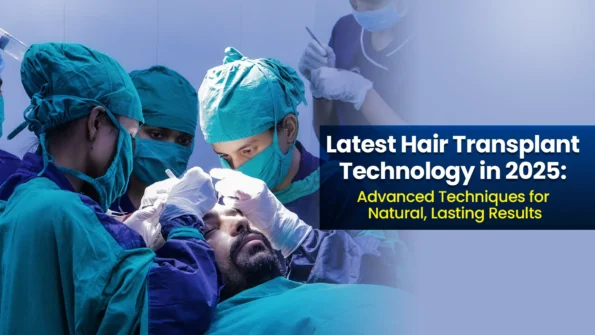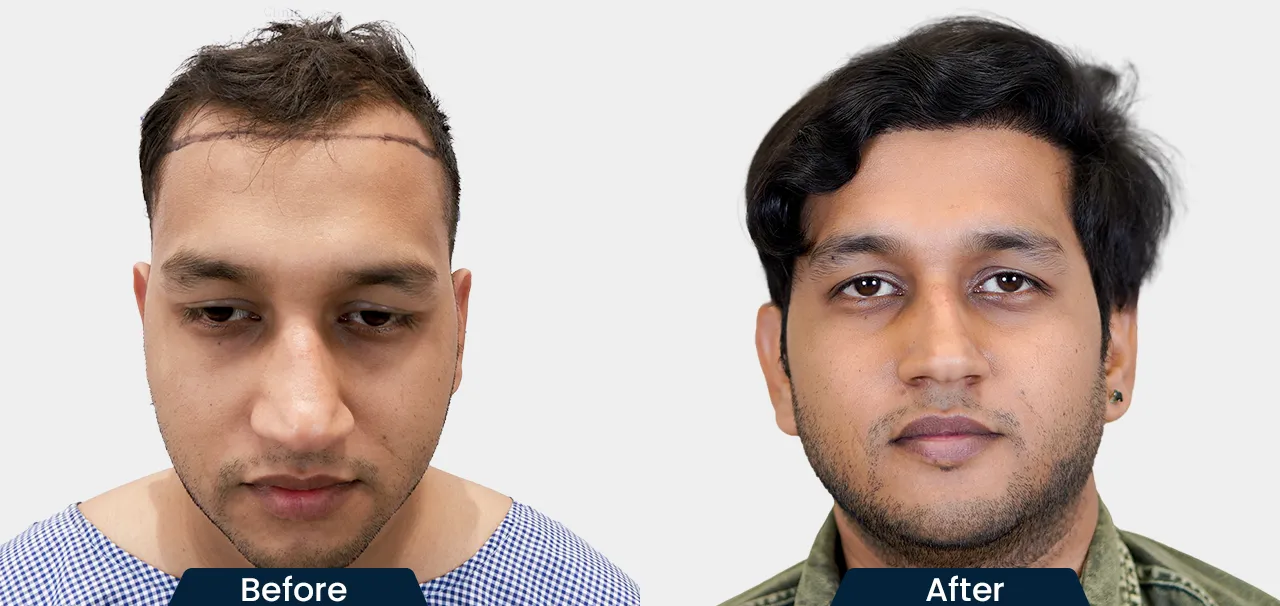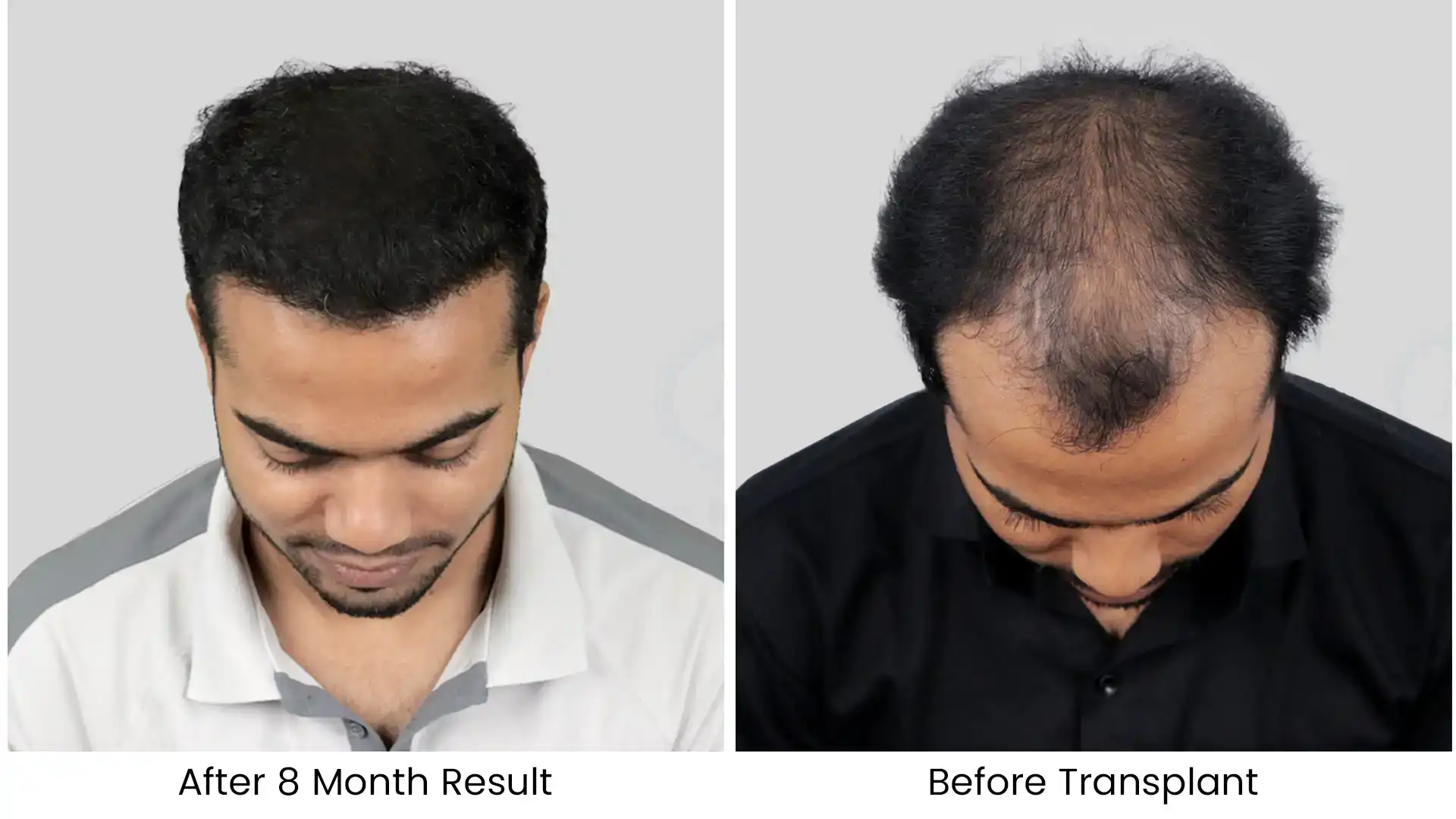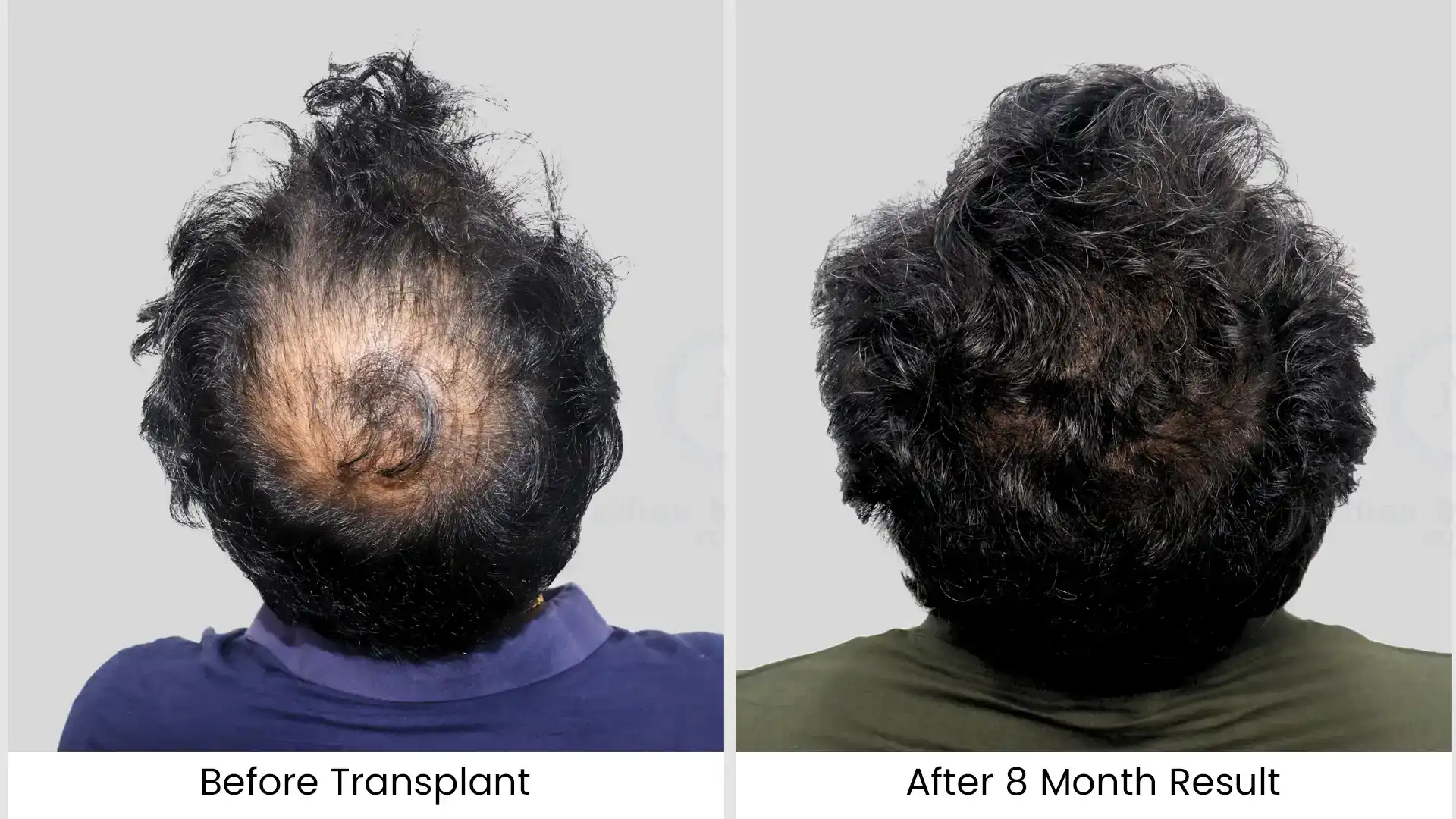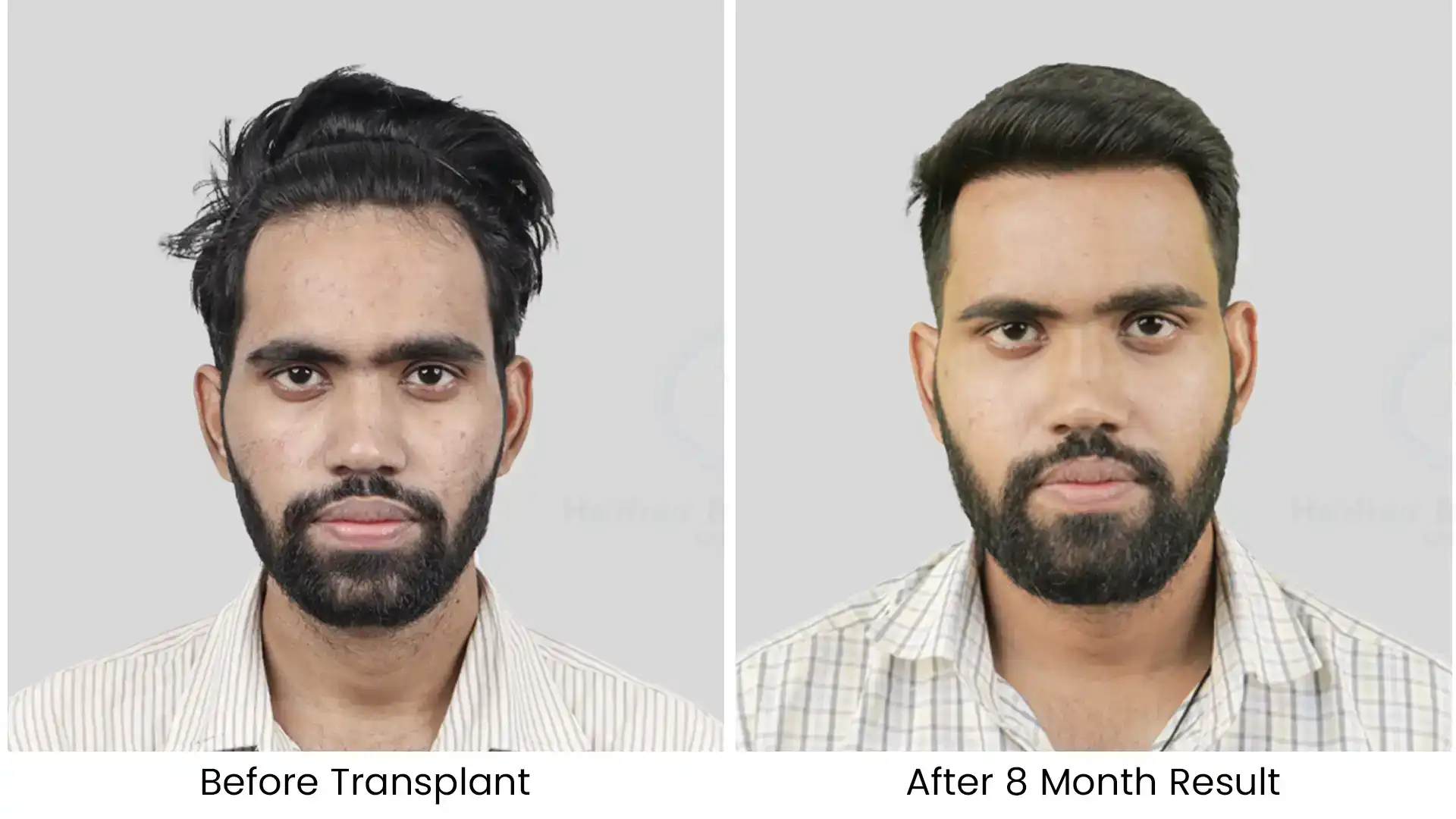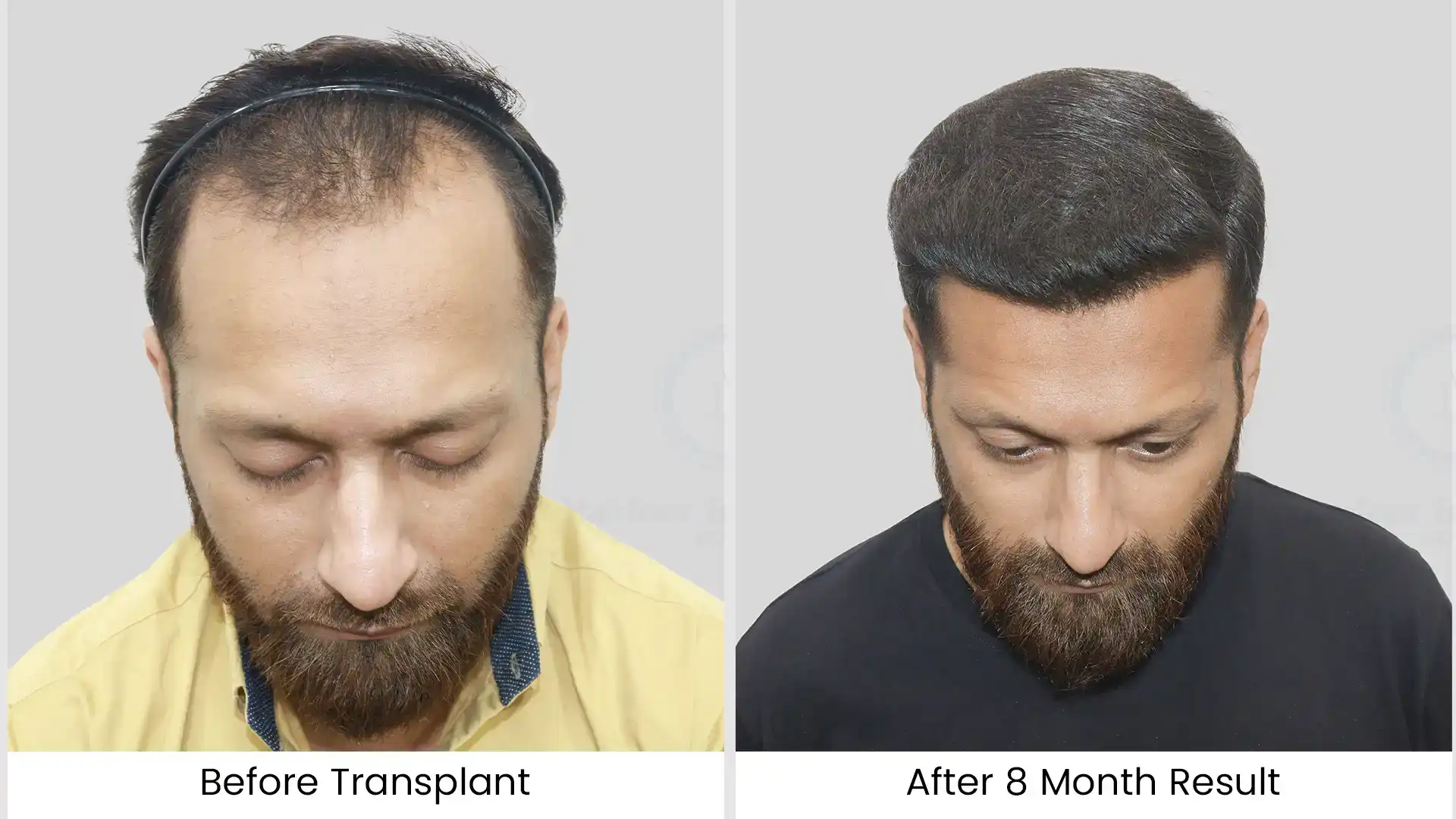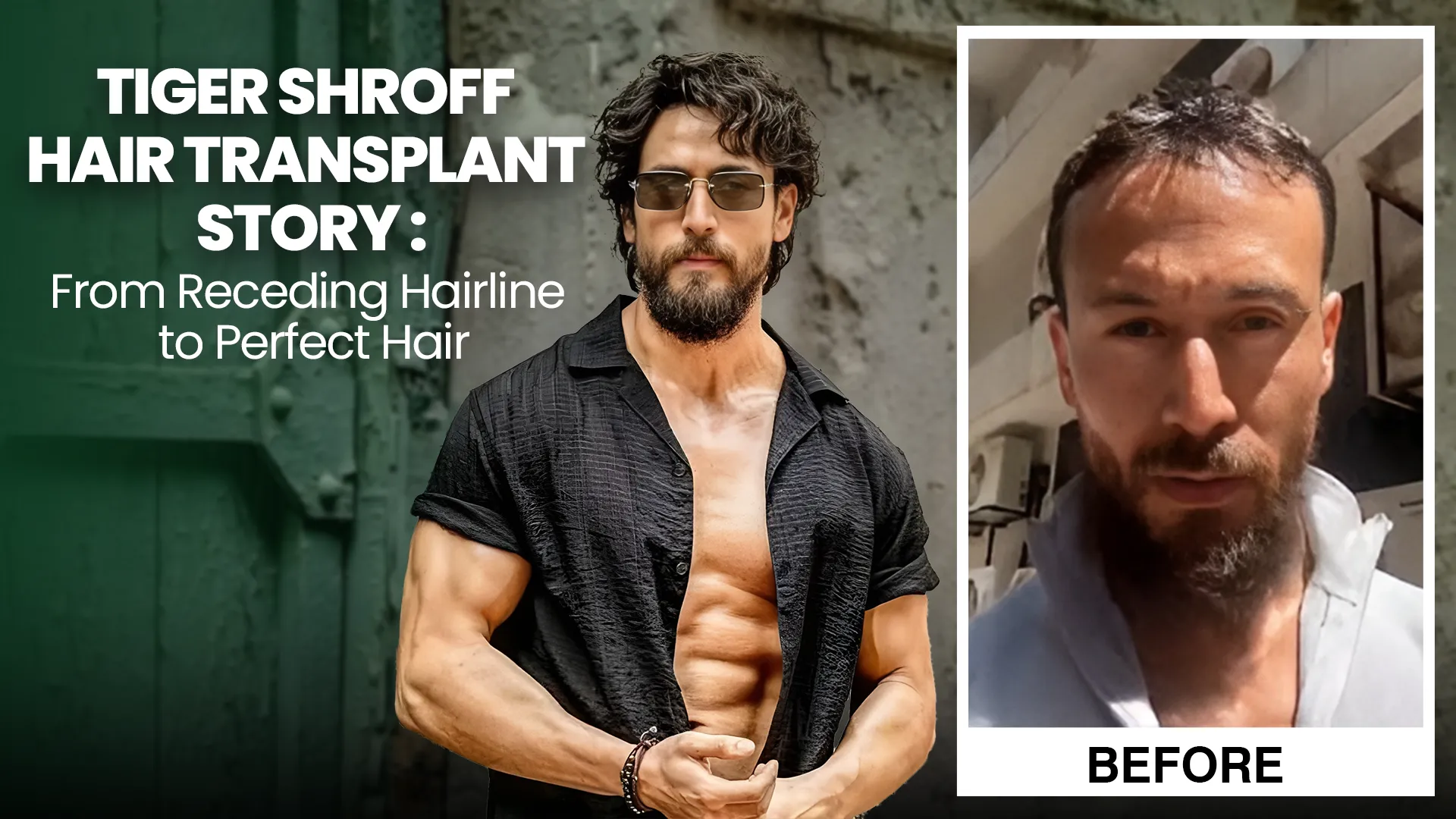For years, people struggling with hair loss had to settle for slow, painful, and often unnatural-looking solutions. But 2025 has changed everything.
Welcome to the new era of hair restoration, where science meets precision. Imagine a world where AI-powered robots can plant your hair with microscopic accuracy, where stem cells can awaken sleeping follicles, and where your own blood can help you regrow thicker, stronger hair all with minimal pain and downtime. Sounds futuristic? It’s happening right now.
At HairFree HairGrow Clinic, we’ve embraced these breakthrough technologies to give our patients natural results that don’t just look real, they feel real. In this guide, we’ll take you through the latest hair transplant technology, reshaping 2025 from robotic precision to regenerative medicine and help you find the perfect treatment for your unique journey back to confidence.
Traditional Hair Transplant Techniques vs. Latest Hair Transplant Technology
Before diving into 2025 hair transplant innovations, let’s compare traditional methods with the latest hair transplant technology. Traditional techniques laid the foundation, but modern advancements enhance precision, reduce scarring, and boost success rates.
Aspect | Traditional FUE/FUT | Latest Hair Transplant Technology (2025) |
Extraction Method | Manual punch/strip removal | Robotic/AI-assisted, percutaneous needles |
Recovery Time | 7-14 days | 2-5 days |
Scarring | Linear (FUT) or dot-like (FUE) | Minimal to none |
Grafts per Session | 1,000-2,000 | Up to 4,000+ (mega sessions) |
Precision | Human-dependent | AI/robotic (99% accuracy) |
Cost (INR) | 50,000-1,00,000 | 60,000-1,50,000 (better value for results) |
Success Rate | 85-90% | 95%+ |
Source: International Society of Hair Restoration Surgery (ISHRS) 2025 Report
Traditional Follicular Unit Extraction (FUE) extracts individual follicles manually, while Follicular Unit Transplantation (FUT) removes a scalp strip. These are effective but time-consuming. In contrast, latest hair transplant technology integrates AI, robotics, and regenerative medicine for superior outcomes.
7 Cutting-Edge Latest Hair Transplant Technologies in 2025
Discover the best hair transplant methods 2025 that fulfill user intent: natural density, quick recovery, and long-term growth. We’ve treated over 5,000 patients at Assure Clinic with these. Here’s what works.
1. Robotic Hair Transplantation (ARTAS System)
Robotic hair transplantation leads latest hair transplant technology, using AI-powered robots for follicle extraction and implantation. The ARTAS system scans your scalp in 3D, harvesting grafts with 0.1mm precision, reducing human error by 99%.
Benefits:
- Shorter Procedure: 4-6 hours vs. 8+.
- Denser Results: Up to 4,000 grafts/session.
- Patient Testimonial: “My hairline looks natural after just 3 days!” – Raj, 35, Mumbai.
At Assure Clinic, robotic sessions start at ₹80,000. Recovery? Back to work in 48 hours.
2. Stem Cell Hair Transplant
Still experimental but breakthrough in advanced hair transplant, stem cell hair transplant regenerates dormant follicles using your own cells. Stemson Therapeutics’ 2025 trials showed 70% new growth in balding areas.
How It Works: Harvest stem cells via liposuction, inject into scalp to multiply follicles.
- Pros: Permanent; amplifies density by 2x.
- Cons: ₹1,20,000+; available in trials.
- Effectiveness: 80% success in Phase II studies.
3. Direct Hair Implantation (DHI)
A refined FUE variant, DHI hair transplant uses Choi Implanter Pens for simultaneous site creation and implantation no pre-incisions needed.
2025 Upgrades: Ergonomic pens with 0.5mm tips for 95% graft survival.
- Recovery: 1-2 days.
- Ideal For: High hairlines, women.
- Cost: ₹70,000 for 2,000 grafts.
Patients love the no-shave DHI option, perfect for professionals.
4. Percutaneous FUE
Enhancing traditional FUE, percutaneous FUE employs specialized circular needles for ultra-precise extraction/implantation.
Advantages:
- Minimizes trauma (0% visible scars).
- Natural angles for curly/ethnic hair.
- Mega Sessions: 3,000+ grafts in 6 hours.
5. Low-Level Laser Therapy (LLLT)
Non-invasive LLLT complements transplants, using red light (650nm) to stimulate follicles post-op.
2025 Devices: Capillus helmets for home use.
- Results: 25% faster growth; reduces inflammation.
- Standalone?: Yes for mild loss; ₹20,000/device.
- Combo: +30% graft survival with FUE.
Affordable and FDA-approved, add to any package for ₹10,000.
6. Platelet-Rich Plasma (PRP) Therapy
PRP hair treatment extracts your blood’s growth factors, injecting them to supercharge transplants.
2025 Protocol: 3 sessions; boosts thickness by 40%.
- Benefits: Enhances existing hair; zero downtime.
- Cost: ₹15,000/session.
- Evidence: 2025 ISHRS study: 92% improvement.
Every patient gets complimentary PRP.
7. Hair Cloning and Tissue Expansion
Emerging: Hair cloning cultures follicles in labs (Replicel trials). Tissue expansion balloons stretch scalp for mega-coverage.
Timeline: Cloning FDA approval by 2026.
- Potential: Unlimited grafts.
Key Benefits of Latest Hair Transplant Technology
Switching to 2025 hair transplant innovations transforms results:
- Higher Precision: AI ensures natural direction/density.
- Reduced Recovery: 80% faster than traditional.
- Better Outcomes: 95%+ survival; lasts 10+ years.
- Minimal Discomfort: Local anesthesia; no stitches.
- Affordable Long-Term: ROI via confidence boost.
- Customized: For ethnic, female, or traction alopecia.
Case Study: Priya, 42, regained 3,000 curls post-DHI+PRP. “Life-changing!”
Benefit | Traditional | Latest (2025) |
Natural Look | 85% | 98% |
Downtime | 10 days | 3 days |
Pain Level | Moderate | Minimal |
The Future of Hair Transplant Technology in 2026+
Latest hair transplant technology evolves rapidly. Expect:
- Gene Editing (CRISPR): Target DHT genes for permanent prevention.
- 3D-Printed Follicles: Custom-grown in labs.
- Nanotech Delivery: Targeted stem cell injections.
- AI Diagnostics: Predict loss patterns via apps.
ISHRS forecasts 50% market growth by 2030.
Conclusion
Hair restoration has come a long way from traditional methods. In 2025, the latest hair transplant technologies like Robotic FUE, DHI, Stem Cell Hair Therapy, and PRP advancements are redefining what’s possible — making hair transplants faster, safer, and incredibly natural-looking. Whether you’re struggling with receding hairlines, thinning crowns, or bald patches, these innovations offer long-lasting solutions tailored to your unique needs
At HairFree HairGrow Clinic, we combine advanced technology, expert surgeons, and personalized care to deliver 100% natural-looking hair restoration results.
Book your free consultation today and discover the best hair transplant solution for you.
FAQs About the Latest Hair Transplant Technology
1. What is the latest hair transplant technique in 2025?
The most advanced techniques are Robotic Hair Transplant and Percutaneous FUE, offering unmatched precision, faster recovery, and highly natural results.
2. How is robotic hair transplant different from FUE?
Robotic systems use AI-guided precision tools to extract and implant hair follicles more accurately than manual FUE, reducing human error and improving graft survival.
3. Is stem cell hair transplant available in India?
Stem cell hair transplants are still in clinical trials but are being researched by top clinics. Some regenerative therapies using stem cell–rich PRP are already available.
4. Can PRP therapy alone regrow hair?
PRP therapy helps stimulate existing hair follicles and improve thickness but works best when combined with hair transplant surgery for long-term results.
5. Is modern hair transplant painful?
Thanks to minimally invasive tools and local anesthesia, modern transplants cause minimal discomfort and allow patients to return to normal activities within days.

Written By
Dr. Pankaj Khunt
MD – Ukraine
Dr. Pankaj Khunt is a skilled hair restoration expert specializing in the Latest Hair Transplant Technology. He provides advanced solutions for natural-looking results, combining innovation and precision to help patients achieve healthy hair growth and long-term scalp wellness.
Disclaimer
We’ve made all possible efforts to ensure that the information provided here is accurate, up-to-date and complete, however, it should not be treated as a substitute for professional medical advice, diagnosis or treatment. See Detailed Disclaimers Here.

